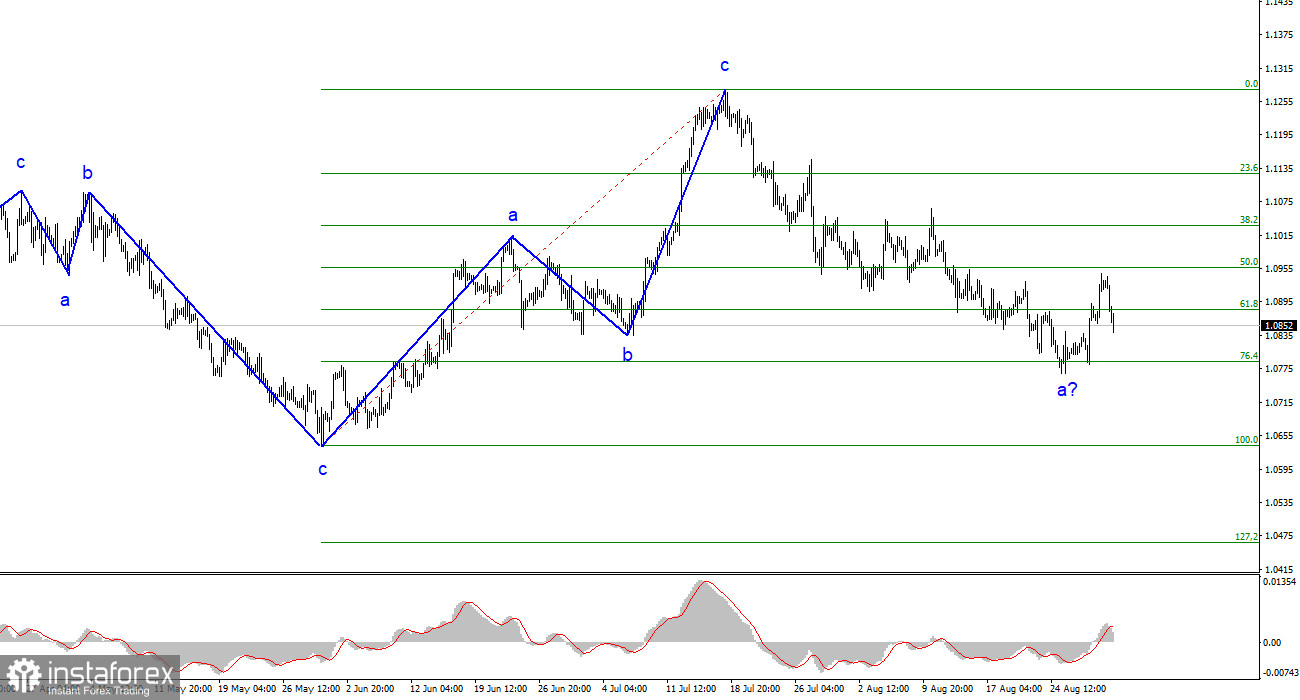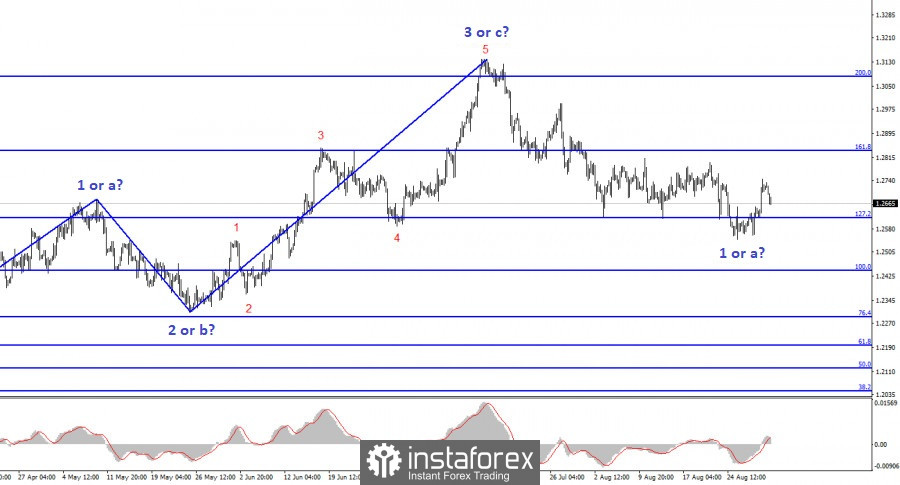Behind the curtain of a large number of reports this week, many may have overlooked another quite significant event – the ECB minutes. This document, similar to the FOMC minutes, contains information about the course of the meeting itself and the opinions of individual members of the Governing Council. It appears that most officials did not rule out a rate hike in September, but some believe that an additional increase would be excessive. This is the first warning sign.

"A further rate hike in September would be necessary if there was no convincing evidence that the effect of the cumulative tightening was strong enough to bring underlying inflation down," the accounts of the meeting showed. Another inflation report was released, and the core rate decreased by 0.2%. Also, the Board of Directors believes that core inflation can remain above the target for a long time, meaning they are completely calm about it. Therefore, they are not in a rush with new rate hikes. This is the second warning sign.
Some members of the Governing Council believe that a new rate hike is not necessary since the rate is already at a sufficiently 'restrictive' level for inflation to return to the target mark in the future. Some members have stated that it's best not to make any rate forecasts but to address the tightening issue at each individual meeting, responding to the latest economic data. The bottom line: the ECB's stance has softened, and now many officials are open to considering a pause in September, viewing it as an equivalent option to a rate hike.
Based on all of the above, I believe that the ECB's tone has become less hawkish. Or more dovish, which should reduce demand for the euro in the future. This scenario is what the current wave pattern suggests, and on Thursday, the euro fell more than the pound, which can be attributed to weak data from the European Union and the ECB minutes itself. Therefore, I expect the euro to continue its decline shortly. If the euro falls, the pound is likely to follow, as these two currencies often move in the same direction. The only question now is how will economic statistics affect the instruments on Friday?
Based on the conducted analysis, I came to the conclusion that the upward wave pattern is complete. I still believe that targets in the 1.0500-1.0600 range are quite realistic, and with these targets in mind, I advise selling the instrument. The a-b-c structure appears complete and convincing. Therefore, I advise selling the instrument with targets set around the 1.0788 and 1.0637 marks. Failure to break through the 1.0788 mark caused quotes to retreat from the lows it reached, probably within wave b. As a result, I advise new short positions after this wave's construction has ended.

The wave pattern of the GBP/USD pair suggests a decline within the downward segment of the trend. There is a risk of completing the current downward wave if it is d, and not 1. In this case, the construction of wave 5 might begin from the current marks. But in my opinion, we are currently witnessing the construction of the second wave within the new downward segment of the trend. By the end of the week, the demand for the dollar will depend on the news background from the US; based on these reports, we can form a conclusion about the possible completion of the second wave. Short positions should be considered after that.
 English
English 
 Русский
Русский Bahasa Indonesia
Bahasa Indonesia Bahasa Malay
Bahasa Malay ไทย
ไทย Español
Español Deutsch
Deutsch Български
Български Français
Français Tiếng Việt
Tiếng Việt 中文
中文 বাংলা
বাংলা हिन्दी
हिन्दी Čeština
Čeština Українська
Українська Română
Română

